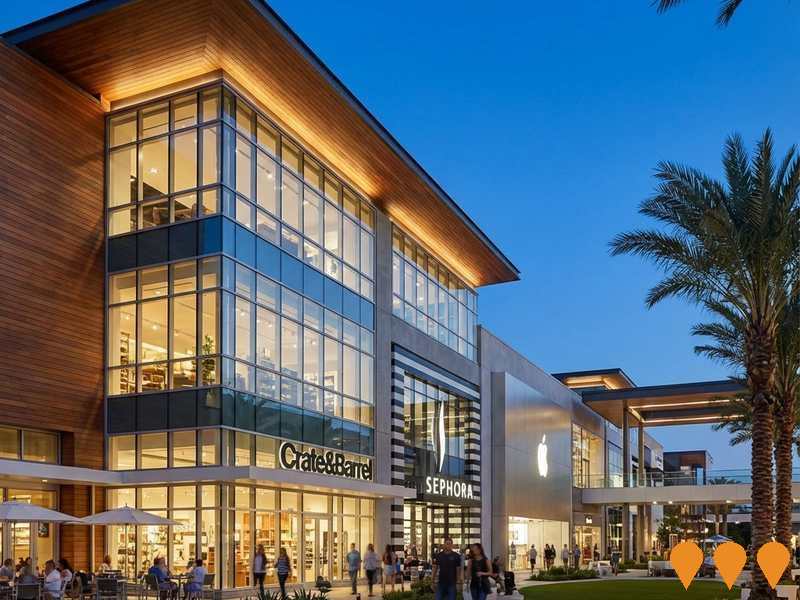Chart Color Schemes
est. as @ -- *
ABS ERP | -- people | --
2021 Census | -- people
Sales Activity
Curious about local property values? Filter the chart to assess the volume and appreciation (including resales) trends and regional comparisons, or scroll to the map below view this information at an individual property level.
Find a Recent Sale
Sales Detail
Population
Bouldercombe is positioned among the lower quartile of areas assessed nationally for population growth based on AreaSearch's assessment of recent, and medium term trends
Bouldercombe's population, as of August 2025, is approximately 1,993. This figure represents an increase of 45 people from the 2021 Census count of 1,948. The rise is inferred from ABS estimated resident population of 1,980 in June 2024 and additional validated new addresses since then. This results in a population density ratio of 1.5 persons per square kilometer. Natural growth contributed approximately 88.9% to recent overall population gains.
AreaSearch uses ABS/Geoscience Australia projections for each SA2 area, released in 2024 with a base year of 2022. For areas not covered and years post-2032, Queensland State Government's SA2 area projections from 2023, based on 2021 data, are adopted, applying proportional growth weightings for age cohorts aligned with ABS Greater Capital Region projections released in 2023 using 2022 data. Future population trends suggest a lower quartile growth for regional areas nationally. By 2041, the area is expected to expand by 54 persons based on current numbers, reflecting a total increase of 2.1% over the 17-year period.
Frequently Asked Questions - Population
Development
Residential development activity is lower than average in Bouldercombe according to AreaSearch's national comparison of local real estate markets
Bouldercombe had nine dwelling approvals over the five years from 2016 to 2020 inclusive. This low level of construction activity is typical of rural areas with modest housing needs and limited development due to local demand and infrastructure capacity. The small number of approvals can significantly impact annual growth statistics.
Compared to Rest of Qld, Bouldercombe had significantly less construction activity during this period. Nationally, the development pattern was also below average. All recent building activity consisted of standalone homes, reflecting the rural character of the area with larger properties being typical. The estimated population per dwelling approval in Bouldercombe was 824 people.
Future projections indicate a population growth of 41 residents by 2041. Building activity is currently aligned with these growth projections, but increased competition among buyers may occur as the population grows.
Frequently Asked Questions - Development
Infrastructure
Bouldercombe has limited levels of nearby infrastructure activity, ranking in the 13thth percentile nationally
Changes to local infrastructure significantly impact an area's performance. AreaSearch has identified 24 projects likely to affect this region. Notable ones include Capricorn BESS Project, Central BESS, Bouldercombe Battery Project, and Mount Morgan Tailings Processing Rehabilitation Project. Below is a list detailing those most relevant.
Professional plan users can use the search below to filter and access additional projects.
INFRASTRUCTURE SEARCH
 Denotes AI-based impression for illustrative purposes only, not to be taken as definitive under any circumstances. Please follow links and conduct other investigations from the project's source for actual imagery. Developers and project owners wishing us to use original imagery please Contact Us and we will do so.
Denotes AI-based impression for illustrative purposes only, not to be taken as definitive under any circumstances. Please follow links and conduct other investigations from the project's source for actual imagery. Developers and project owners wishing us to use original imagery please Contact Us and we will do so.
Frequently Asked Questions - Infrastructure
Capricorn BESS Project
A 300 MW / 1200 MWh battery energy storage system project located near Bouldercombe, Queensland. The project comprises shipping containers fitted with battery units and control equipment, arranged in a grid pattern with a substation connecting to Powerlink's Bouldercombe Substation. Development application submitted to Rockhampton Regional Council in February 2025, with construction targeted for late 2026 and operations beginning mid-2028.
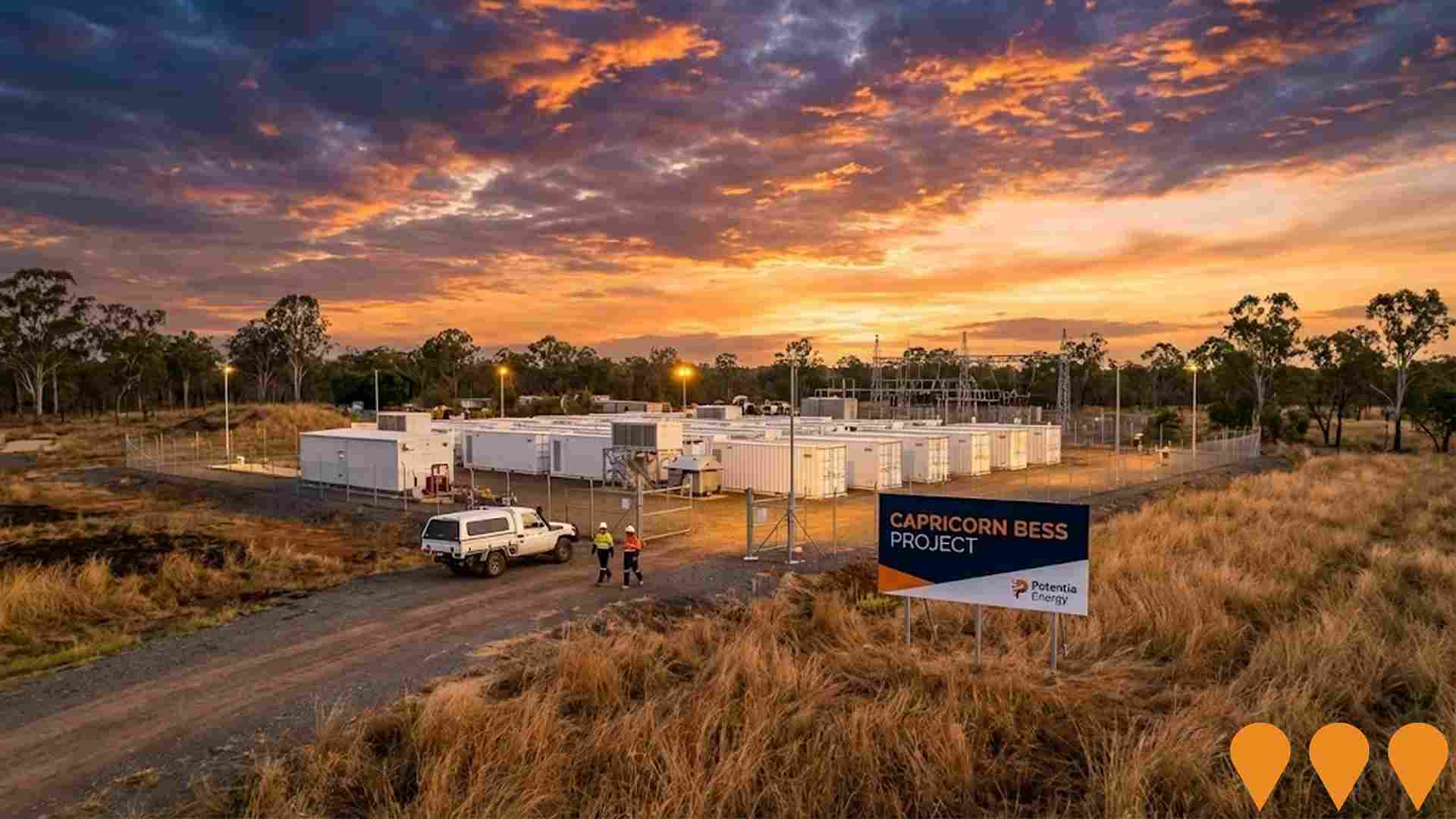
The Central BESS
A 500MW/1000MWh battery energy storage project connecting to the Bouldercombe Terminal Station to support Queensland's clean energy transition. Development application was rejected by Rockhampton Regional Council in December 2024 due to community opposition and concerns about cumulative impacts. ACEnergy is exploring appeal options while committed to delivering $1.5 million in community benefits including neighborhood benefit sharing program and community fund.
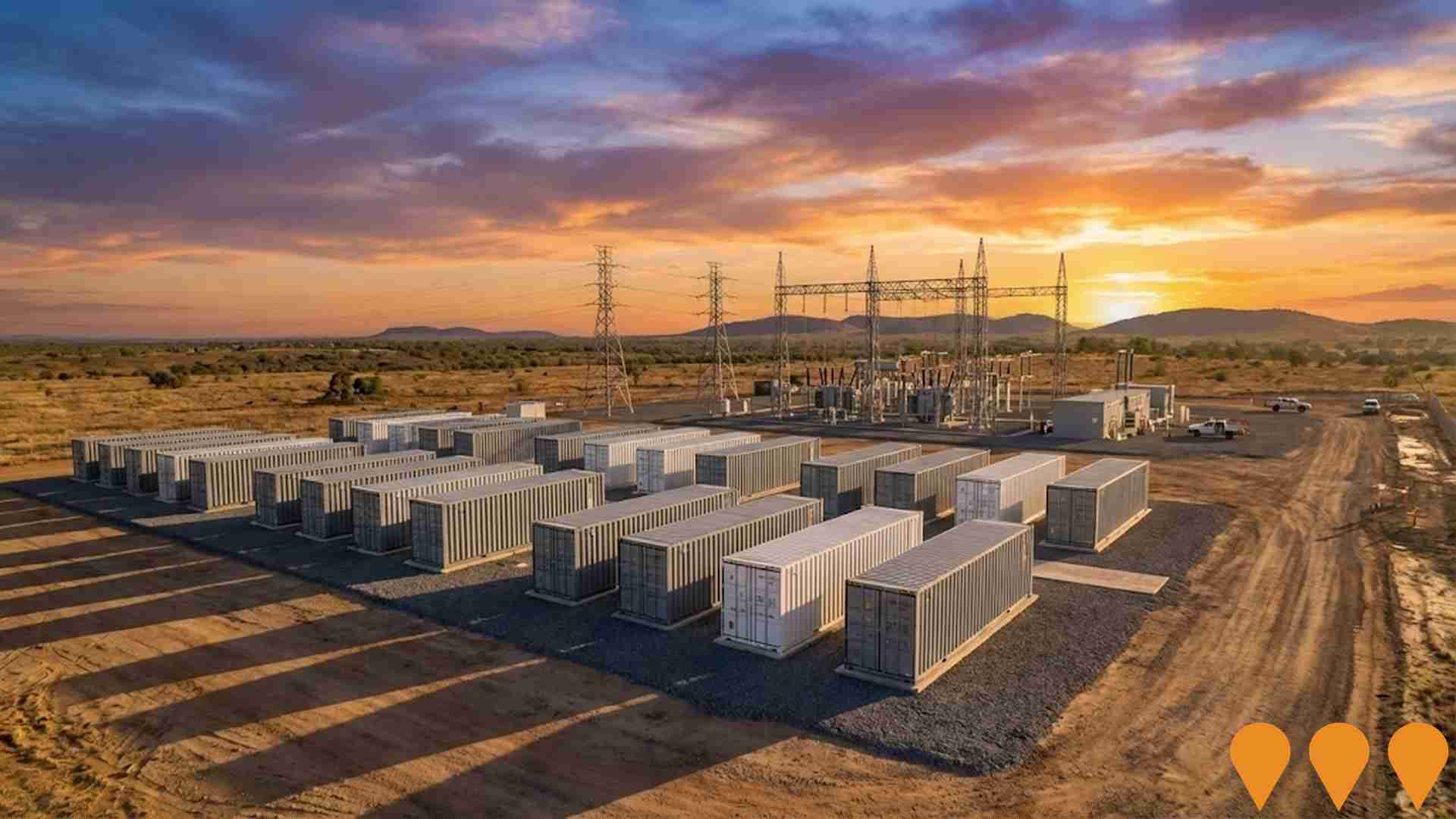
Bouldercombe Battery Project
A 50MW/100MWh battery energy storage system utilizing 40 Tesla Megapack 2.0 units, connected to Powerlink's 275kV/132kV Bouldercombe substation. The project provides arbitrage and frequency control ancillary services (FCAS) to support grid stability and enable renewable energy integration. Operational since November 2023, the battery is operated by Tesla using Autobidder software under a revenue-sharing agreement with Genex Power.
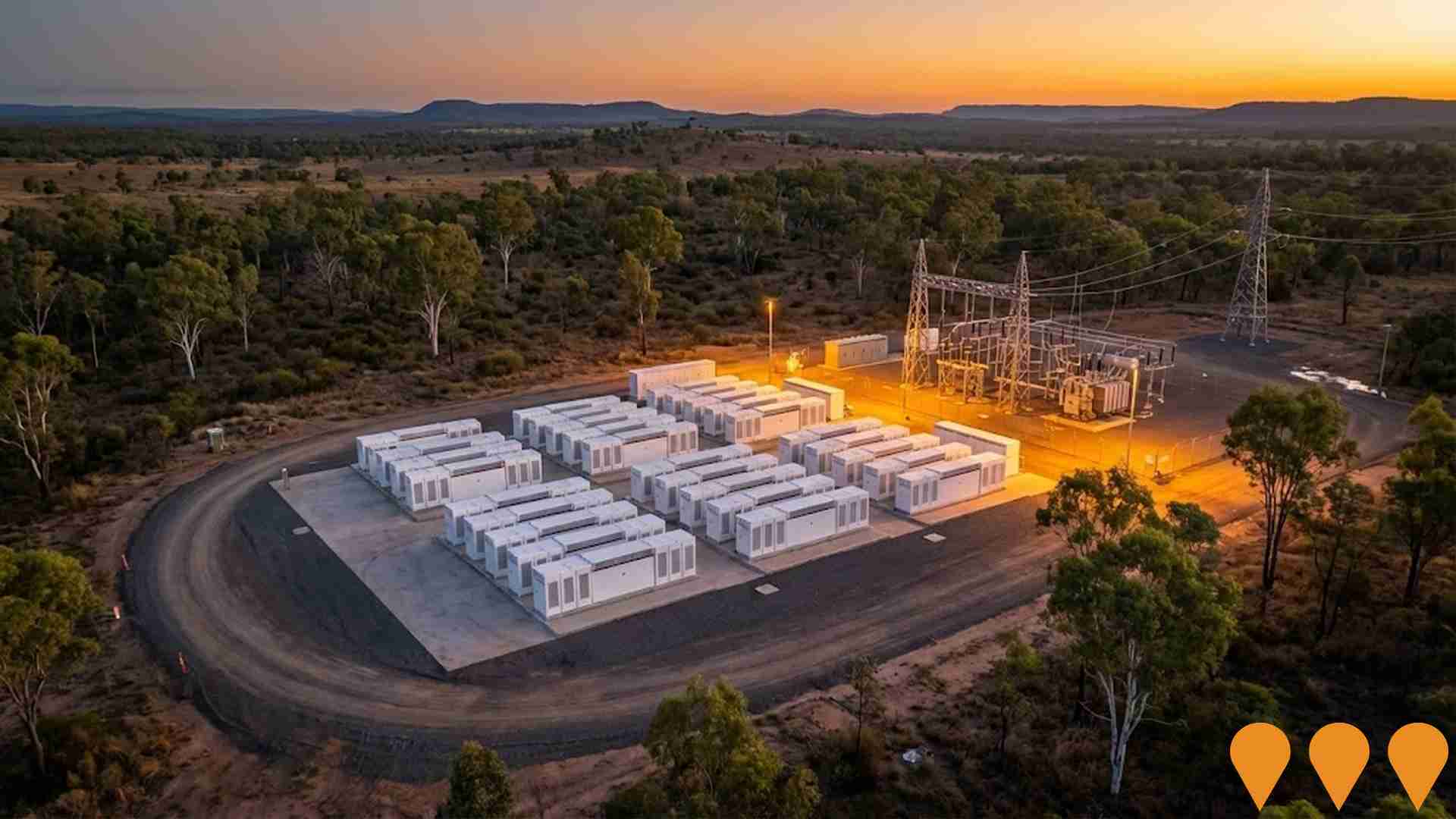
Gracemere Industrial Area Expansion
Expansion of the Gracemere Industrial Area to create Queensland's premier transport and logistics hub. The project includes new industrial land, improved road access, and infrastructure to support heavy vehicle movements and freight operations serving Central Queensland's mining and agriculture sectors.

Capricorn Highway Rockhampton to Gracemere Duplication
Duplication of 8.4 kilometres of the Capricorn Highway between Rockhampton and Gracemere, including new bridges, improved intersections, and enhanced safety features. The project improves freight efficiency and reduces travel times for the 25,000 vehicles using this corridor daily.
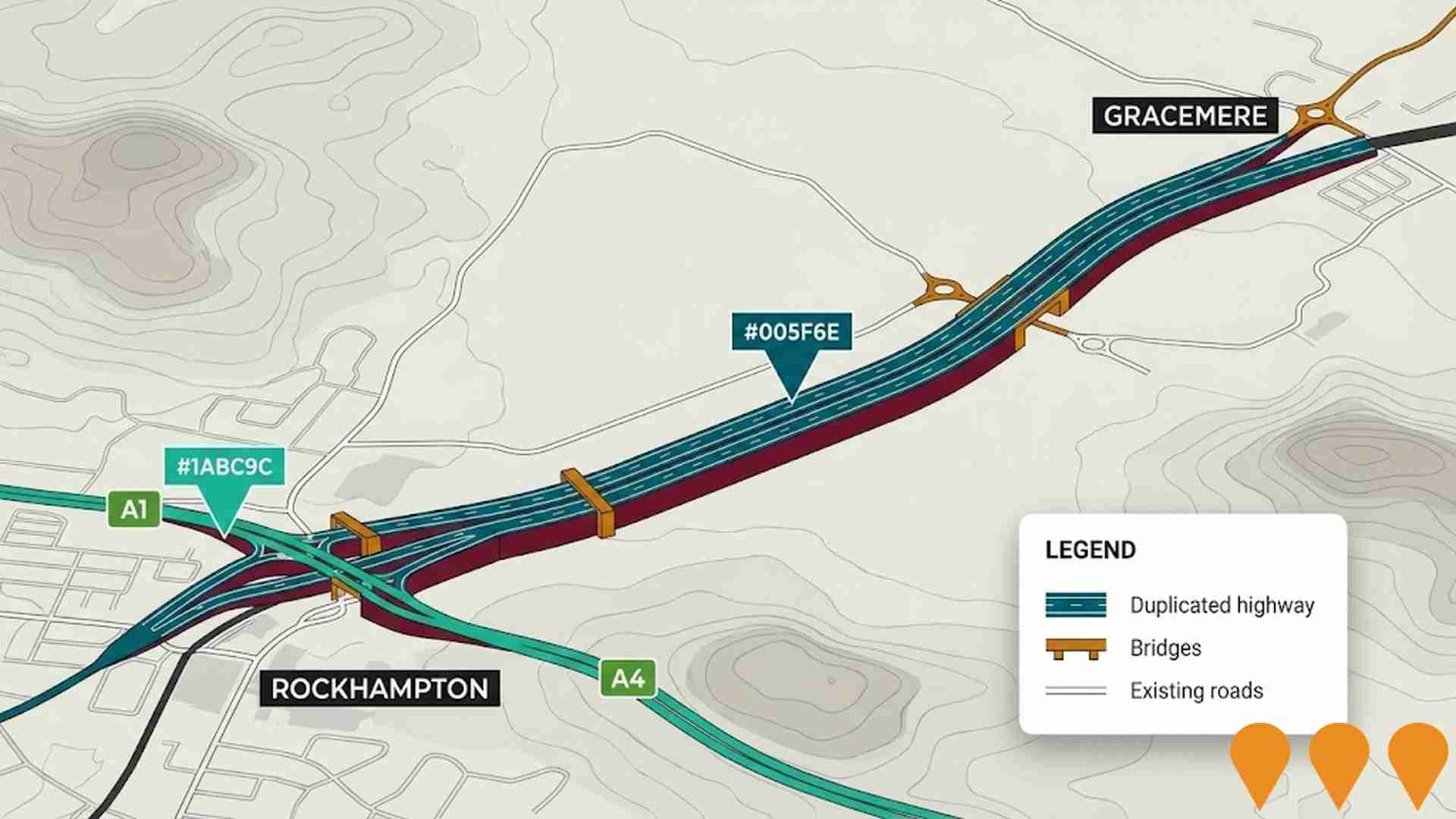
Gracemere Residential Housing Estates
Multiple residential housing estate developments across Gracemere to accommodate the town's growing population. Projects include new housing subdivisions, improved infrastructure, and community facilities to support the expanding residential community.
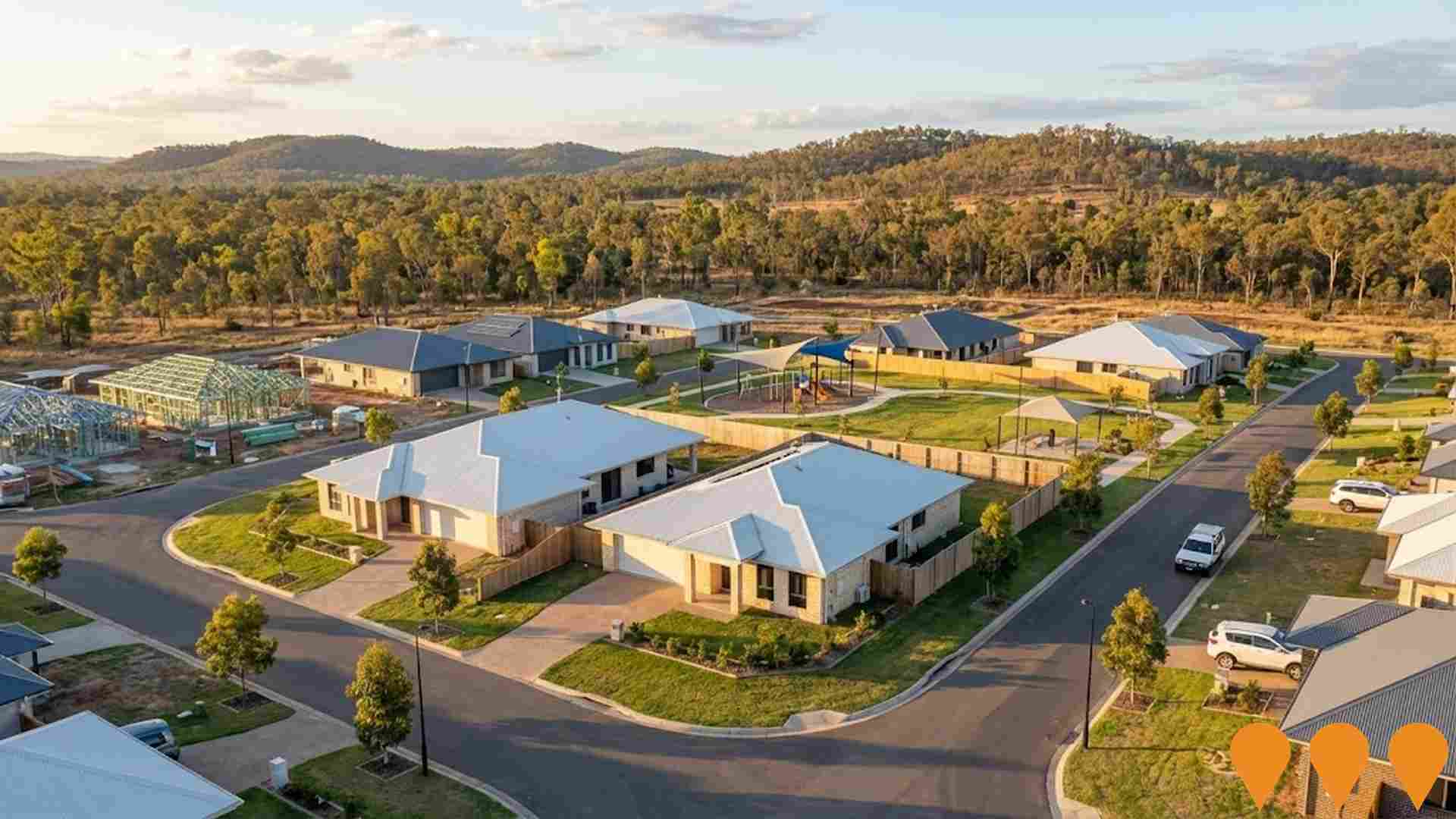
Gracemere State High School
A new state high school for Gracemere near Rockhampton, with $10 million funding allocated for early site works, detailed costings and master plan development. Stage 1 construction will deliver infrastructure for Years 7 and 8, with construction scheduled to commence mid-2026. This project ends a 20-year wait for a secondary campus in the rapidly growing Gracemere community.
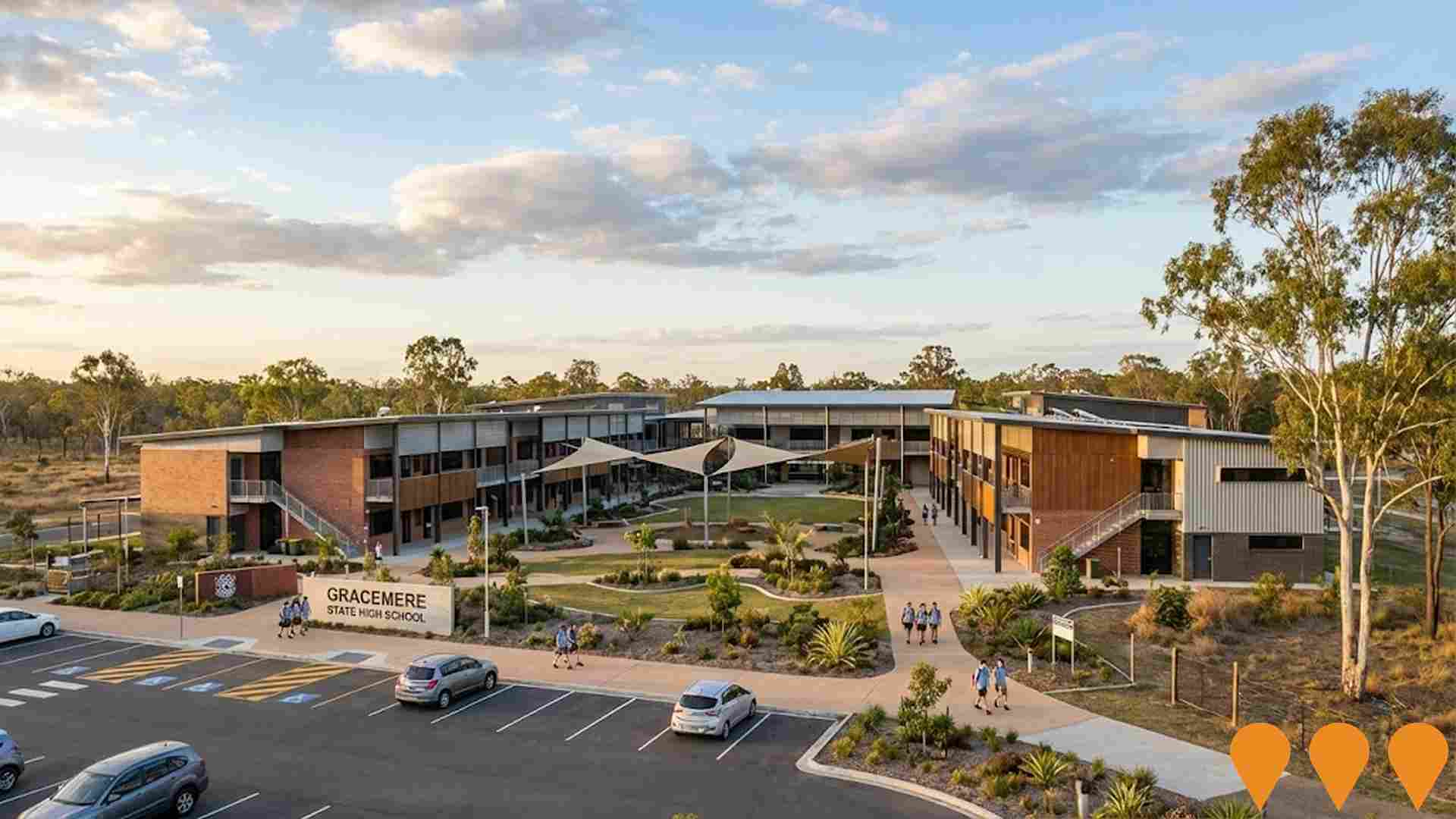
Central Queensland Livestock Exchange Upgrade
Major upgrade of the Central Queensland Livestock Exchange, the largest cattle sales facility in the Southern Hemisphere. The project includes new selling floors, improved animal welfare facilities, upgraded infrastructure, and enhanced technology systems.

Employment
The employment environment in Bouldercombe shows above-average strength when compared nationally
Bouldercombe has a diverse workforce with both white and blue collar jobs, prominent manufacturing and industrial sectors, and an unemployment rate of 3.4%. Over the year ending June 2025, employment grew by 4.4%.
As of that date, 1,055 residents were employed, with an unemployment rate of 2.9%, below Rest of Qld's rate of 3.9%. Workforce participation was at 53.5% compared to Rest of Qld's 59.1%. Key industries included health care & social assistance, construction, and mining, with mining employment levels at 2.7 times the regional average. Accommodation & food services employed only 4.7% of local workers, below Rest of Qld's 8.3%.
Employment opportunities locally may be limited as indicated by Census data. Between June 2024 and June 2025, employment increased by 4.4%, while labour force grew by 5.3%, raising the unemployment rate by 0.9 percentage points. In comparison, Rest of Qld had employment growth of 1.8% and an unemployment rate rise of 0.2 percentage points. National employment forecasts from Jobs and Skills Australia (May 2025) suggest Bouldercombe's employment could grow by approximately 5.7% over five years and 12.3% over ten years, based on industry-specific projections applied to the local employment mix.
Frequently Asked Questions - Employment
Income
Income levels align closely with national averages, indicating typical economic conditions for Australian communities according to AreaSearch analysis
Bouldercombe's median income among taxpayers was $53,465 in financial year 2022. The average income stood at $65,488 during the same period. These figures compare to Rest of Qld's median and average incomes of $50,780 and $64,844 respectively. Based on Wage Price Index growth of 13.99% since financial year 2022, current estimates for Bouldercombe would be approximately $60,945 (median) and $74,650 (average) as of September 2025. According to Census 2021 income data, household, family and personal incomes in Bouldercombe rank modestly, between the 18th and 32nd percentiles. Income brackets indicate that 28.4% of the community earns between $1,500 and $2,999 (566 individuals), which is consistent with broader trends across the metropolitan region showing 31.7% in the same category. Housing costs are manageable with 87.6% retained, however disposable income sits below average at the 36th percentile.
Frequently Asked Questions - Income
Housing
Bouldercombe is characterized by a predominantly suburban housing profile, with above-average rates of outright home ownership
Bouldercombe's dwelling structures, as per the latest Census, were 98.1% houses and 1.9% other dwellings. In comparison, Non-Metro Qld had 88.5% houses and 11.5% other dwellings. Home ownership in Bouldercombe was 46.2%, with mortgaged dwellings at 41.0% and rented ones at 12.8%. The median monthly mortgage repayment was $1,550, higher than Non-Metro Qld's average of $1,517. Median weekly rent in Bouldercombe was $250, lower than Non-Metro Qld's figure of $300. Nationally, Bouldercombe's mortgage repayments were significantly lower at $1,863 and rents substantially below the national average of $375.
Frequently Asked Questions - Housing
Household Composition
Bouldercombe has a typical household mix, with a higher-than-average median household size
Family households make up 75.8% of all households, consisting of 30.0% couples with children, 36.4% couples without children, and 9.9% single parent families. Non-family households account for the remaining 24.2%, with lone person households at 21.6% and group households comprising 1.3% of the total. The median household size is 2.6 people, which is larger than the Rest of Qld average of 2.5.
Frequently Asked Questions - Households
Local Schools & Education
Bouldercombe faces educational challenges, with performance metrics placing it in the bottom quartile of areas assessed nationally
The area's university qualification rate is significantly lower than the Australian average, at 10.1% compared to 30.4%. Bachelor degrees are most common among qualified residents at 8.0%, followed by postgraduate qualifications at 1.2% and graduate diplomas at 0.9%. Vocational credentials are prevalent, with 42.4% of residents aged 15 and above holding such qualifications, including advanced diplomas (8.2%) and certificates (34.2%). Educational participation is high, with 31.6% of residents currently enrolled in formal education, including 12.5% in primary, 12.5% in secondary, and 2.2% in tertiary education.
The area has three schools with a combined enrollment of 107 students, operating under typical Australian school conditions (ICSEA: 953) with balanced educational opportunities. These schools focus exclusively on primary education, with secondary options available in surrounding areas. School capacity is limited locally at 5.4 places per 100 residents compared to the regional average of 17.6, leading many families to travel for schooling.
Frequently Asked Questions - Education
Schools Detail
Nearby Services & Amenities
Transport
No public transport data available for this catchment area.
Frequently Asked Questions - Transport
Transport Stops Detail
Health
Health performance in Bouldercombe is well below average with prevalence of common health conditions notable across both younger and older age cohorts
Bouldercombe faces significant health challenges, with common conditions prevalent across both younger and older age groups.
Private health cover is more prevalent here than the average SA2 area, at approximately 52% (~1,044 people). The most frequent medical conditions are arthritis (10.3%) and asthma (8.1%). Notably, 63.4% of residents report no medical ailments, compared to 64.7% in Rest of Qld. Bouldercombe has a higher proportion of seniors aged 65 and over (23.3%, or 463 people), compared to the state average of 18.5%. Despite this, health outcomes among seniors are above average and better than those of the general population.
Frequently Asked Questions - Health
Cultural Diversity
The latest Census data sees Bouldercombe placing among the least culturally diverse areas in the country when compared across a range of language and cultural background related metrics
Bouldercombe, as per data collected, had a cultural diversity index below the average. Its population was predominantly citizens at 86.3%, with 94.4% born in Australia and 99.6% speaking English only at home. Christianity was the dominant religion, practiced by 60.2% of Bouldercombe's population, compared to 56.3% across the rest of Queensland.
In terms of ancestry, Australians made up 37.0%, which is higher than the regional average of 31.3%. English and Scottish ancestry followed at 32.7% and 7.7% respectively. Notably, German ancestry was slightly overrepresented in Bouldercombe at 4.7%, compared to 4.9% regionally. Australian Aboriginal ancestry stood at 4.4% (vs regional 5.1%) and Spanish ancestry was present at 0.4% (vs regional 0.2%).
Frequently Asked Questions - Diversity
Age
Bouldercombe hosts an older demographic, ranking in the top quartile nationwide
Bouldercombe's median age is 46 years, which is significantly higher than Rest of Qld's 41 and the national average of 38 years. Compared to Rest of Qld, Bouldercombe has a higher percentage of residents aged 55-64 (17.2%) but fewer residents aged 25-34 (7.4%). This 55-64 concentration is well above the national figure of 11.2%. Between the 2016 and 2021 Census, the percentage of Bouldercombe's population aged 65 to 74 increased from 13.7% to 15.5%, while the percentage of residents aged 5 to 14 decreased from 13.4% to 11.9%. By 2041, Bouldercombe is projected to experience notable changes in its age composition. The 75 to 84 age group is expected to grow by 56%, reaching 191 people from 122. This demographic shift will be led by residents aged 65 and older, who are anticipated to represent 72% of the population growth. Conversely, both the 5 to 14 and 45 to 54 age groups are projected to decrease in number.

